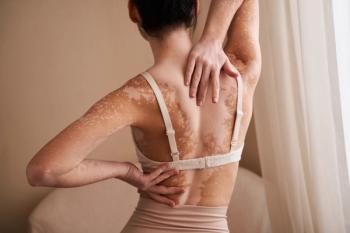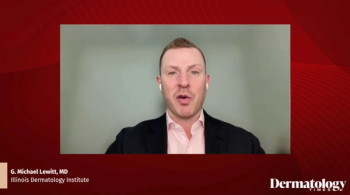
Studies Find High Prevalence of Suicidal Ideation in Patients with Vitiligo
Because vitiligo affects appearance, people with vitiligo are disproportionately affected by psychiatric conditions, including depression.
Vitiligo is a chronic autoimmune condition with symptoms manifesting primarily on the skin. It is estimated that approximately
The signature symptom of vitiligo is the appearance of discolored, light patches in areas of the skin that may include the face, hands, and other visible areas.
Because the disease affects appearance, people with vitiligo are disproportionately affected by psychiatric conditions, including depression. Risk factors for reduced quality of life due to psychosocial issues include having lesions in visible areas of the skin, being a younger age, being female, having a longer disease duration (longer than 5 years), or having large body areas affected by the disease.
Patients who have vitiligo may experience low self-esteem, embarrassment, social isolation, anxiety, and depression that can lead to suicidal ideation. Studies have reported the prevalence of suicidal ideation among people with other dermatological conditions: 5.4% among people with psoriasis, 2.6 % among those with alopecia, and 11.8% among those with atopic dermatitis.
A systematic review of observational studies published in
The review, led by author Somanaboina Padmakar of Lovely Professional University in India, and included studies published in English and conducted in India, Egypt, and Iran. Various tools were used to assess suicidal ideation, including a general health questionnaire, the Hamilton Rating Scale for Depression (HRSD), the Beck Depression Inventory (BDI), the Quick Inventory of Depressive Symptomatology – Self Report 16 (QIDS-SR 16), and the Diagnostic and Statistical Manual of Mental Disorders - 5th edition (DSM-5).
The lowest prevalence of suicidal ideation was 6%, found in a study that used a general health questionnaire. The highest prevalence was 25%, found in a study that used the DSM-5 as a measurement tool.
Study limitations included the lack of a uniform tool across studies for assessing suicidal ideation and the fact that the studies reviewed were only published in English and conducted in three countries. The study authors recommend conducting a multicenter study using a uniform assessment tool.
The authors conclude that suicidal ideation is a common occurrence in people with vitiligo, and they emphasize the need for screening for suicidal ideation in this population. They comment, “Physicians should actively screen [suicidal ideation] in patients with vitiligo and may take appropriate interventions to reduce the risk of suicide. A future systematic review of risk factors associated with suicidal ideation and behavior in vitiligo patients is recommended.”
Newsletter
Like what you’re reading? Subscribe to Dermatology Times for weekly updates on therapies, innovations, and real-world practice tips.


















